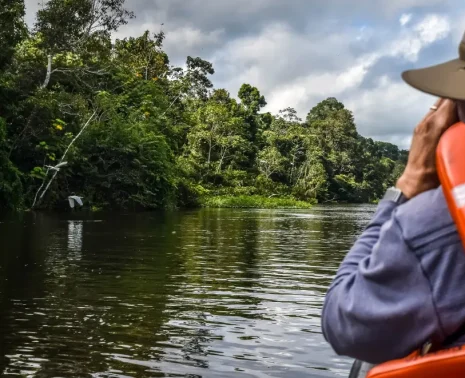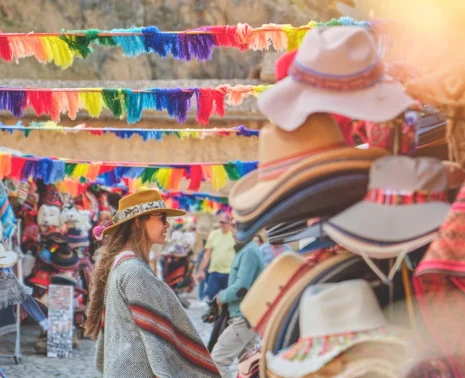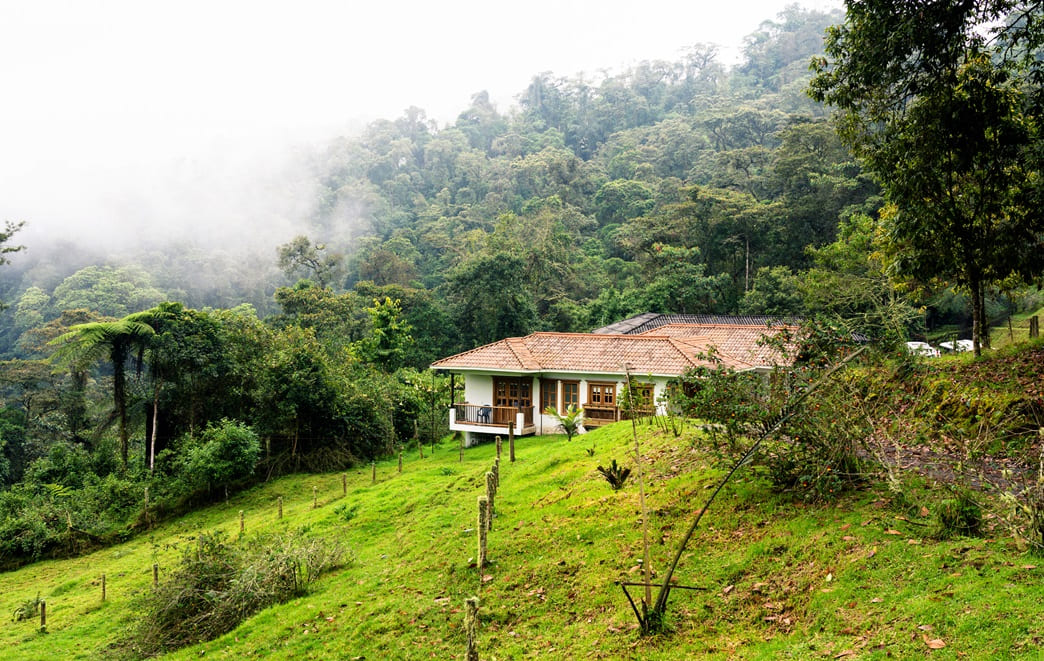
Colombia is a destination of rich culture, extreme biodiversity, and stunning natural wonders – it’s far from a challenge to understand why the country, which boasts a Caribbean coastline, the Andes Mountains, and the Amazon Rainforest has become more popular with visitors, year after year. As Colombia’s tourism skyrockets and those planning their trips are eyeing the country’s quaint towns, bustling cities, and incredible nature – sustainability is at the forefront of the conversation regarding how to experience sustainable travel to Colombia. Luckily, the country has been leading the charge in sustainable travel in South America.
With the second-greatest biodiversity in the world and incredibly diverse heritage that has influenced global culture, Colombians have a lot to be proud of—and a lot to protect, making sustainable travel to Colombia more important than ever. Kuoda is here to help you experience Colombia, sustainably. Here are 5 ways to experience sustainable travel to Colombia which allow travelers to visit the country and leave a positive impact on the local community and environment. Ready to get started planning your trip? Reach out to a Kuoda advisor today to plan out your sustainable travel to Colombia.
1. Visit one of the city’s two dozen destinations officially designated as sustainable
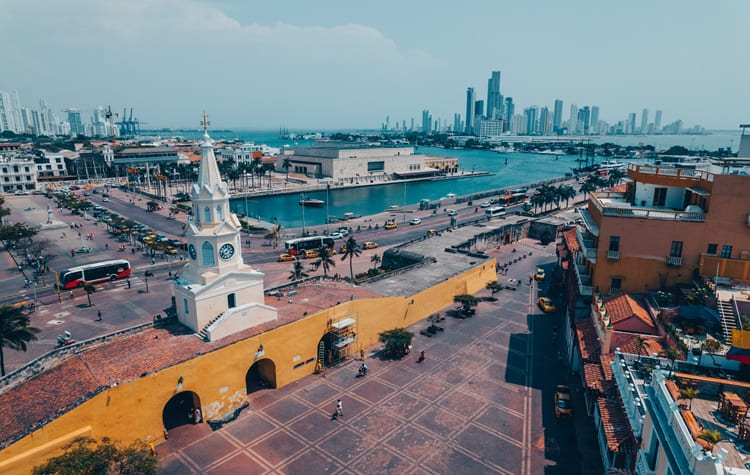
Colombia has 27 tourist destinations certified as sustainable by its Ministry of Trade, Industry, and Tourism—more than double the number from just a few years ago. Among the recognized municipalities are La Macarena (home of the Caño Cristales river), La Candelaria (the capital’s historic center), and Cartagena’s Walled City. This official designation indicates that a locale has developed environmentally-sustainable tourism infrastructure in a way that generates wealth and opportunity within the respective community.
2. Try one of the country’s many vegan restaurants

Colombian food is often brilliant in its simplicity: a protein with sides of starches such as rice, plantains, yucca, and potatoes (usually fried) as well as a salad or vegetables. But for those visitors who prefer to avoid animal products, vegan and vegetarian eateries are increasingly becoming an option — and while Happy Cow is always a reliable source for locating these places, walking around any neighborhood to find a vegan place should be a matter of minutes, not hours.
Take Medellín, for example. As in many Colombian cities, Mexican food has long become a thing. Walking around El Poblado, a neighborhood long popular with visitors for its forested landscape, range of accommodations, and nightlife, it’s easy to find vegetarian and vegan options: and requesting a dish to be vegan is often accommodated. El Poblado itself has at least a couple of places offering vegan tacos: Other popular eateries, such as Criminal Taquería, will tweak their menu items if requested.
Even smaller towns, such as the lakeside resort of Guatapé, have vibrant vegan options – and the chances are high that you’ll see locals dining in restaurants as well.
3. Visit one of the National Parks, responsibly
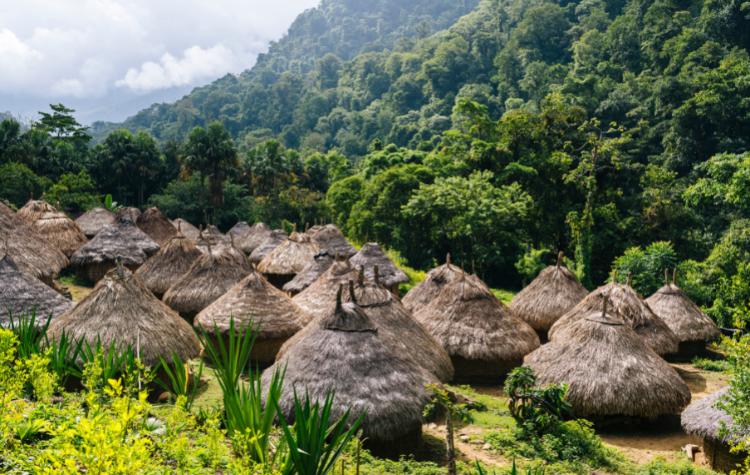
Los Nevados Park in Santa Marta
Colombia’s lush biodiversity is one reason why travelers are increasingly finding their way to the country, whether they seek to trek up one of the few glaciers in a tropical zone, visit the lush Pacific coast or explore the country’s mountainous Zona Cafetera.
But that tidal wave of interest is paired with the risk of more ecological damage. To that end, local authorities have established limits on how many people can visit these natural wonders, including Los Nevados and Tayrona National Park.
4. Stay in an eco-lodge
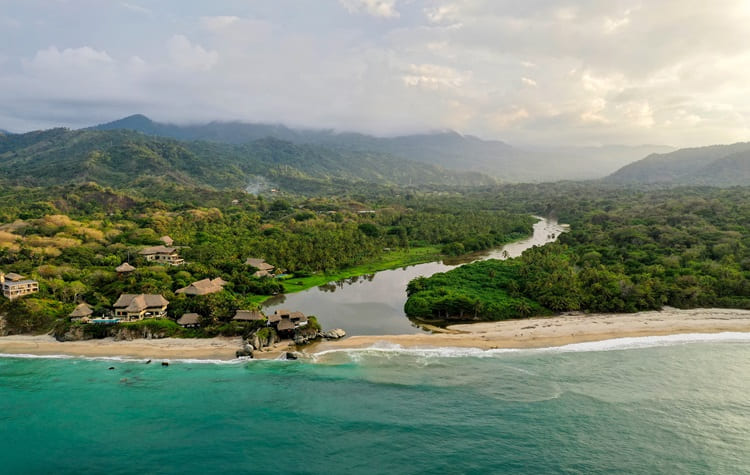
It’s easy to “go green” when choosing where to stay in Colombia. From the glistening Caribbean coast to the Coffee Region of Antioquia, you’ll find a crop of hotels, inns, and camping sites perfectly suited for a total immersion into nature.
Las Islas Hotel, located on Isla Barú in Bolívar, has its own marine habitat conservation programs, giving back to island inhabitants through employment opportunities, healthcare, and potable water. The Araucana Lodge, a charming hotel in Valle del Cauca, grows organic fruits and vegetables on-site to responsibly feed guests with local produce instead of importing ingredients.
In Guatapé, a number of low-footprint eco-glamping retreats have popped up—Bosko, Oasis, and Levit, to name a few—that blend seamlessly into their wild surroundings with desirable luxury comforts. At the Corocora Camp in the Orinoquía region, hospitality revenue goes back into wildlife conservation projects in the El Encanto de Guanapalo nature reserve. In the same region, the Savanna Orinoquía Lodge encourages guests to connect with their majestic wild surroundings through experiences that are at once immersive, educational, and thrilling.
5. Support Colombian folk music

Musicians accompany the parade in Barranquilla’s Carnival
With a nickname like the “Land of a Thousand Rhythms,” it’s no surprise that the discussion around Colombia’s musical heritage is reaching a high note. In numbers alone, there are actually 1,025 folk rhythms originating across five regions in Colombia: the Caribbean, Andes, Amazon, Orinoco, and the Pacific. In fact, nine of these rhythms have even been declared a Cultural Heritage of the Americas by the American States Organization. Colombian music has played such an influential role on the world stage that Bogotá and Medellín are part of UNESCO’s Creative Cities Network in the music category. The World Tourism Organization and Sound Diplomacy declare “music as the new gastronomy,” while detailing the ways that tourists can consume local musical culture like food. Right now in Colombia, the country is fostering creative industries and cultural entrepreneurs, including those in the music and events industry, inevitably bringing an element of tourism into the equation.
Sustainable travel minimizes the negative impact on the environment, local communities, while aiming to preserve cultural heritage and uplift local communities. With environmentally-friendly practices, such as reducing waste, conserving resources, and protecting wildlife habitats, while supporting local economies through the involvement of local communities, we can be better travelers and protect the communities we visit for years to come along with enhancing our own travel experience by experiencing authentic and culturally-rich experiences.
Kuoda is committed to sustainability, and each of our tailor made trips is designed to offer personalized, meaningful experiences that also help build the communities we work and live in. Interested in planning your sustainable travel to Colombia? Get in touch with a Kuoda travel expert to start crafting your dream itinerary.
Best Amazon Tours: Journey Deep into South America’s Living Heart
Into the Wild: Where Luxury Meets the Pulse of the Jungle The Amazon is not a place you simply visit. It�...
Read PostConscious Travel Peru: Explore with Purpose, Connect with Heart
The way we travel matters. It shapes the stories we carry, the memories we create, and the impact we leave beh...
Read PostConservation Travel in South America: Explore and Protect with Purpose
Travel That Gives Back as Much as It Takes You In There is a growing movement among travelers to explore the ...
Read Post










